We’ve spent the last two installments of this blog series understanding the severity of litter—especially plastics—and how far it can go.
Here are six ways that you can help with reducing some of the biggest plastic culprits that Keep the Tennessee River Beautiful is finding along the river valley.
1. CHOOSE REUSABLE CUPS/BOTTLES/ TUMBLERS
Plastic bottles are projected to take up to 450 to 1,000 years to break down and Styrofoam cups can take anywhere from 50 to 500 years. Any time you opt against the use of a throwaway bottle or cup, that’s one less item that can contribute to the floating trash islands. After a length of time, similar conditions that bust up shells into microscopic pieces would bust up the bottles and cups for aquatic animals to ingest. Reusable cups, bottles, and tumblers help to reduce the frequency of this outcome.
2. CARRY STORE BOUGHT GOODS IN TOTE BAGS
Plastic grocery bags are some of the most common items we find littered along the waterways. Though they take 10 to 100 years to break down, plastic bags are used in masses on a daily basis. Because of their light-weight nature, they are easily blown from garbage cans or trucks, eventually winding up in—you guessed it—our waterways.
3. DON’T USE THOSE PLASTIC STRAWS!
Many have seen the viral video of the sea turtle with a straw lodged in its nostril. (If you haven’t, check it out: https://bit.ly/2DmBHHi) If placed end to end, the amount of straws used in the U.S. in one day alone could circle the planet 2.5 times. For those who simply must use straws, there are metal straws that can be purchased from your local grocery store for $6-$10. Or, try reusing those larger plastic straws from souvenir cups.
4. BYOC - BRING YOUR OWN CUTLERY
Similar to straws, plastic cutlery is a one-time use item with minimal weight that makes it a good candidate for long-distance travel on our waterways. When ordering takeout, consider declining cutlery and using your silverware at home. There are also plenty of options for reusable cutlery sets that you can keep with you for dining out. Some of these options come in nice little cases. Some are packaged as a pocket knife of cutlery. These items make excellent stocking stuffers or wedding giveaways (also serving a dual purpose as giveaways/utensils for the wedding meals).
5. PACK FOODS WITH REUSABLE STORAGE CONTAINERS
Throwaway sandwich bags have become a staple of the American packed lunch. They’re also a common find during river cleanups! You’ll help your wallet and reduce your chances of contributing to litter that’s blown from landfills, trash cans, or garbage trucks and into our water system. It’s also a great opportunity to teach the kids about reducing your household’s waste impact. Next time you pack your food to go, consider using glass or plastic reusable storage containers!
6. RECYCLE!
While reducing waste is the best way to prevent litter in our waterways, recycling is still a great option to make a difference! If you haven’t already, sign up for your garbage collector’s recycling program. It’s estimated that 80 percent of plastic is not recycled each year.
It’s going to take time for us to get this plastic crisis under control, but it’s in your power to start making a difference today. Any of these options are a good start!
We encourage you to begin eliminating those brief purpose, long-term presence items from your day-to-day routine. Just don’t try to make all of these changes at once. Be sure to ease into it with one item at a time so that it isn’t too overwhelming.
It’s a decision that will continue to make a positive impact on our planet for (450 to 1,000) years to come!
Keeping our waterways healthy and beautiful will do the same for our oceans. To find out how you can help to remove the plastics already in our waterways, visit www.KeepTNRiverBeautiful.org.
Read the previous installments of this blog series, “As Oceanic Trash Islands Rise, What You Can Do from the Tennessee River Valley”:






